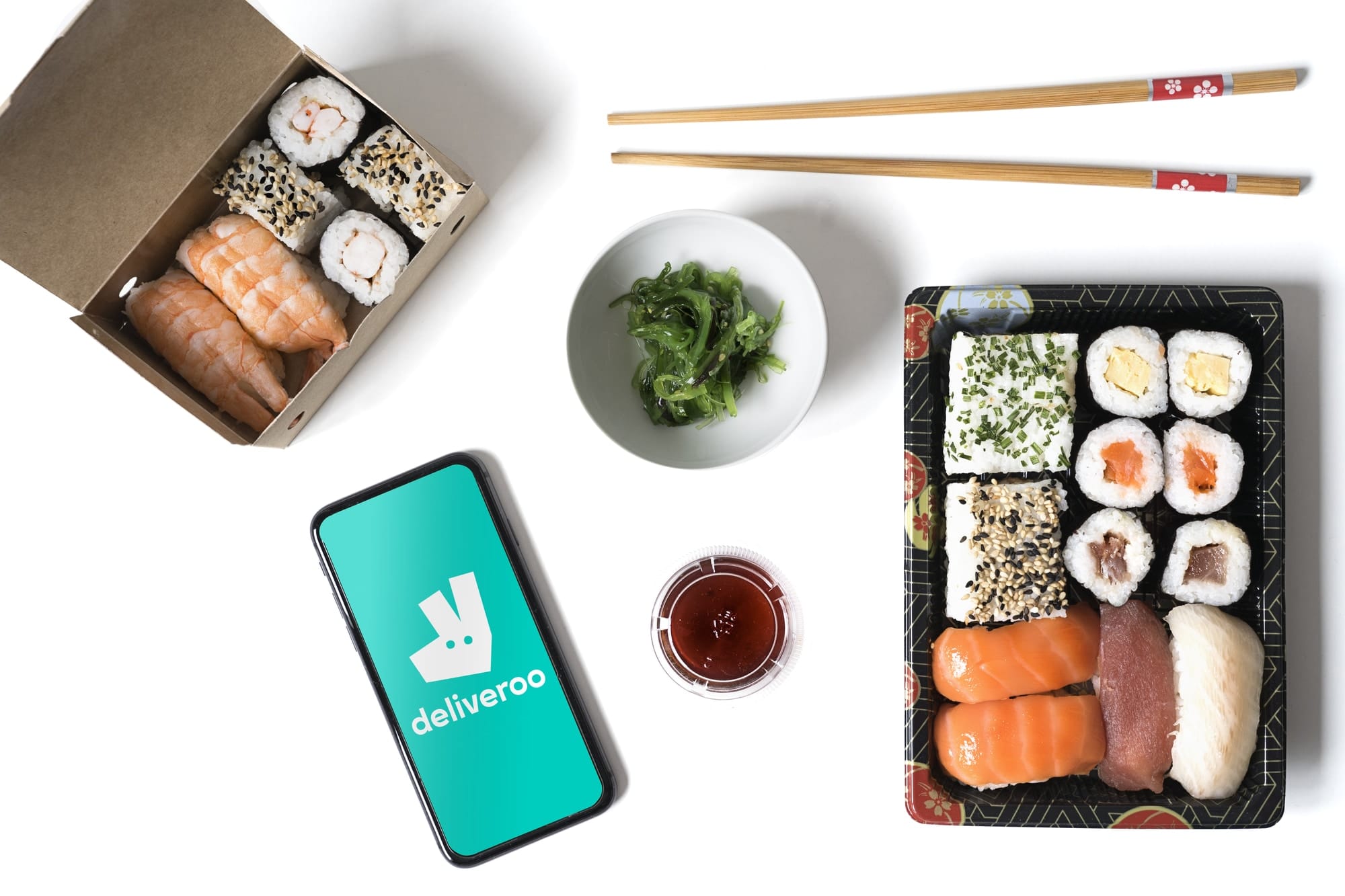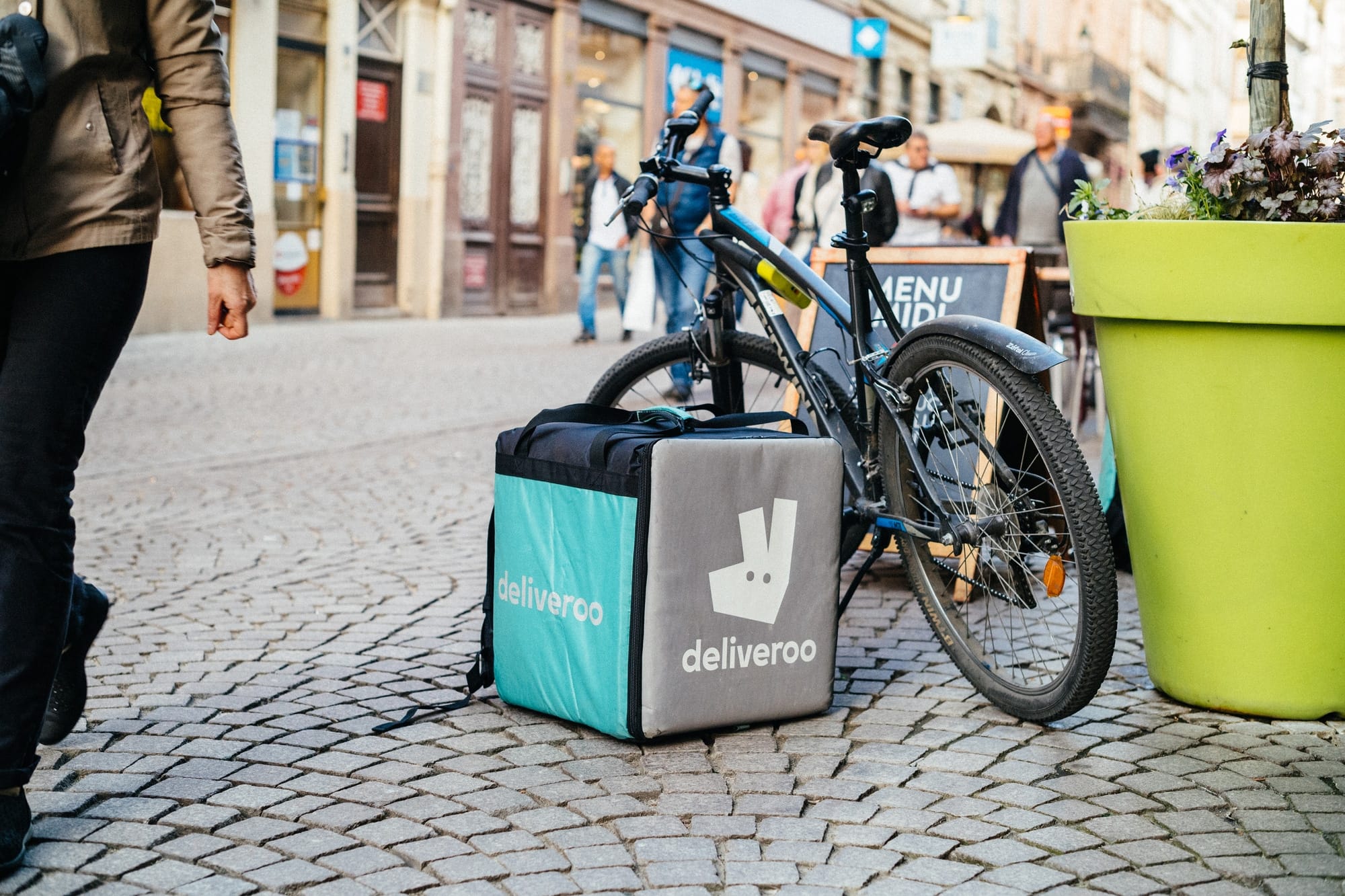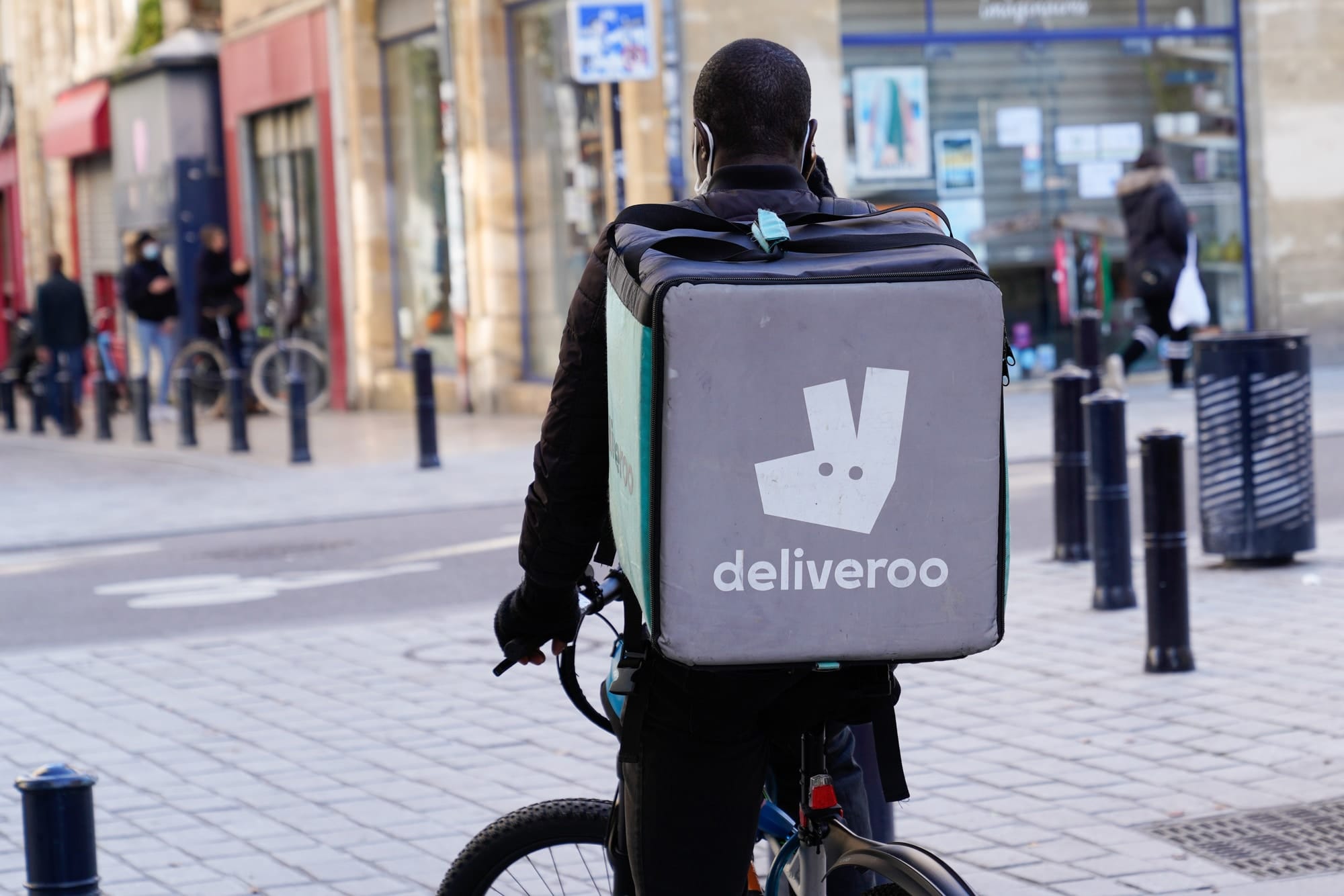If you’re living in the UK, chances are that you have tried out or at least heard of Deliveroo. For those of you who have never had the chance of using this service or simply haven’t heard the name, Deliveroo is an online food delivery company based in London. In the following Deliveroo SWOT analysis we will take a closer look at its performance.
In 2013, when Deliveroo’s CEO, Will Shu, moved to England he found out that while there were numerous local restaurants that offered amazing food, only a few of them delivered. Taking things into his own hands, he decided to offer a food delivery service that was not only quick but also reliable.
By connecting customers who wanted quality food with restaurants willing to provide it, and using efficient riders that delivered a vast variety of food to the customers' doorsteps, Deliveroo saw a growth of over 650%.
This growth was not just limited to Deliveroo, in fact, the restaurants that partnered with them also saw an increase in their revenue of up to 30% which led to the creation of more jobs in the restaurant sector.
Deliveroo goes so far as to help restaurants expand to areas where their food is needed but was not previously available! The company also makes use of the latest technology to decrease delivery time, increase efficiency resulting in greater customer satisfaction.
The service began in London and expanded all over the UK, but it can also be found in France, Spain, Kuwait, Belgium, Hong Kong, Singapore, United Arab Emirates, and the Netherlands.
While this surface-level information can give you an idea of the company, to actually assess its performance you might need to use a SWOT analysis. This analysis makes use of four dimensions or components (strengths, weaknesses, opportunities, and threats) to gauge how a company is performing.
Strengths and weaknesses are called internal factors because they are directly related to the organization and controlled by it. The external factors, opportunities, and strengths, are what affect the company.
For instance, Deliveroo’s fast delivery service is its strength (internal factor) because it can hire reliable riders and use good vehicles to deliver its food. However, since it has no control over the Covid-19 pandemic, it is an external factor (threat).
That being said, let’s take a look at the SWOT analysis of Deliveroo.

What are some of Deliveroo’s biggest strengths?
No company has it easy, at least not for long. In order to compete effectively, they have to rely on a carefully curated set of strengths. Deliveroo is no different and so it has to rely on the following strengths.
Quality Service
People's lives are busier than ever, with longer working hours, and other responsibilities, few individuals actually have time to cook a proper meal so a delicious cooked meal, delivered to your doorstep is a go-to for many.
By offering a quick and reliable delivery service using the latest technology, Deliveroo is able to provide the best quality service that is a burning need for many households and even workplaces. The delivery time for orders can be as low as 20 minutes!
A Strong Network of Partners
To fulfill its aim of providing access to a variety of cuisines, Deliveroo has partnered with more than 140,000 restaurants and grocery partners. In fact, Deliveroo is quite partner-focused, such that it provides opportunities for restaurants to open outlets in places where they are needed but not currently present.
Such approaches result in the growth of both Deliveroo’s and their partners' revenues, allowing them to maintain a strong relationship and work together to satisfy customers.
Pioneer In Ghost Kitchen Business
Deliveroo has set up a subsidiary that primarily deals with food that is meant to be delivered. Due to the nature of this subsidiary, the setup cost is minimal and the delivery time is also reduced.
The reduction in delivery time is a major advantage for Deliveroo because this allows it to differentiate itself from and compete effectively with other food delivery services.
Market Share
In terms of its share of the food delivery service market in the UK, Deliveroo holds an overall third position. While this might not seem like much, it actually helps the company in the long run.
Having such a position means that Deliveroo is one of the top 3 food delivery services in the UK which means that most people are aware of this brand and recognize it. This brand awareness and recognition coupled with the right marketing campaign can lead to an increase in market share over time.
Pricing
Because of its strong relationships with its partners, Deliveroo can make use of the best possible prices which are usually much lower than the prices offered by competitors.
This price advantage helps Deliveroo stay ahead of its competitors and allows it to earn greater revenues.
Cost
Because Deliveroo does not make any of its own products, the costs incurred are significantly less when compared to a standard brick-and-mortar company.
Deliveroo operates its own app and hires workers/riders based on when they are needed which allows them to avoid certain forms of taxes and employment costs.
Marketing and Advertising
It is no secret that young people are usually more tech-savvy which makes Deliveroo the best option for them. The service requires using an app to place orders and track the progress of the delivery which is easier for younger consumers.
The number of young consumers is also increasing and so is their buying power, which makes them especially important to service providers such as Deliveroo.
The brand uses a minimalistic logo and a humor appeal in its advertisements to attract consumers by positioning itself as more than just something that satisfies a need. Deliveroo is something you want in your life!

What are the biggest weaknesses of Deliveroo?
Let’s be honest, strengths and weaknesses go hand-in-hand. It's never an either-or situation, rather when a company can boast about its strengths, it must also keep its weaknesses in mind. There is no denying that Deliveroo has managed to maintain its strengths but we also need to take a look at where it is lacking.
Mishandling of the Covid-19 Pandemic
The Covid-19 pandemic spread like wildfire and no country or business was left unscathed. While some businesses fared better than others by swiftly understanding and catering to the changes brought about by the pandemic, Deliveroo was not so fortunate.
The company actually ended up reducing about 15% of its workforce which helped curb the losses brought about by the pandemic. While the reduction of the workforce did help, a better more well-thought-out strategy might have been a better option.
In fact, the pandemic actually resulted in significant growth of the food delivery industry because lockdowns prevented people from stepping out of their homes so they resorted to ordering food from the comfort of their homes.
Had Deliveroo come up with a better strategy to reduce its losses, it could have attained further growth during the pandemic.
Losses
While Deliveroo offers quality services, it is unable to meet its profit targets which may be a red flag for investors and might even lead to the formation of a negative image of the company.
If not resolved quickly, this may become a major point of concern.
Branding Problems
To differentiate itself from its competitors, Deliveroo chose to rebrand itself in 2016. This rebranding aimed to show customers that Deliveroo is a legitimate brand that keeps its customers' interests in mind.
However, there is an issue of brand loyalty in the food delivery sector because customers have a lot of options and often drift towards the company that offers them the best price.
PR Problems
The company has faced publicity issues because of the inadequate training provided to employees, unfair pay, and the disregard for the safety of the workforce.
Such issues, if not handled correctly can take a life of their own and result in long-term problems for the company such as a loss of goodwill and the deterioration of the brand’s reputation.
Technical Issues
Since Deliveroo relies primarily on an app to place, track and manage orders, technical issues can be disastrous.
That was exactly what happened in 2017 when a technical error caused the app to crash resulting in the loss of orders and money which infuriated customers.
What further added fuel to the fire was that the company did not offer proper customer support or communicate clearly with its customers in wake of the crisis.
What are the opportunities for Deliveroo?
Looking at the list of weaknesses may have alarmed you, but fear not because there are still opportunities that Deliveroo can avail, to improve its performance. Listed here are some opportunities that Deliveroo can make use of.
Growth Opportunities
The food delivery service market has seen exponential growth due to the restrictions brought about by the Covid-19 pandemic.
This expansion of the market has presented growth opportunities for Deliveroo which can utilize effective strategies to increase its market share.
Increase in Demand
Due to Deliveroo’s quick and reliable service which perfectly suits the needs of the modern customer, there is an increase in the demand for this service.
Grocery Delivery Market
While Deliveroo has already entered the grocery delivery market, it can focus its efforts on growing further in this area.
Since the grocery delivery market is quite similar to the food delivery sector, Deliveroo can utilize existing resources in a different way to cater to this particular segment.
onNew Technology
In order to cater to the growing demand, Deliveroo can make use of new technology to cater to a greater number of orders.
It can also partner with other companies to take orders through their apps or websites, hence increasing awareness of both brands.

What are the threats for Deliveroo?
Now that we have talked about the opportunities awaiting Deliveroo, it is also important to mention the threats that the company is facing. Here are some of the threats that the company has to keep in mind.
Strong Competition
The food delivery market is full of strong competition and little to no cost is incurred if customers switch from one company to another.
Workforce
While the company cuts most of its cost by hiring riders on a contract basis, if these riders are considered as employees, additional costs may arise.
Changes in Food Preferences
Consumers are leaning towards healthier food options which may require Deliveroo to re-evaluate the options that it provides.
Legal Issues
Deliveroo also has to keep in mind legal issues such as the employment laws of the country it operates in.
Deliveroo SWOT Analysis: Conclusion
While Deliveroo was at the top of its game at the beginning, over time it has had to face several issues such as the Covid-19 pandemic, legal issues, and intense competition.
However, an effective strategy and long-term commitment towards improvement can be the solution that results in Deliveroo’s success.
For instance, using strategies to avail the opportunities presented by the pandemic and tailoring partnership strategies to better serve customers can result in Deliveroo’s growth.
While the brand is doing well right now, it's never too late to do even better!

If you want to take a look at how a company is performing, a SWOT analysis may be one of the most suitable options. Not only is it easy to understand and use, but it can also be utilized to understand different industries as a whole or each industry in depth.
It takes into account the company's strengths and weaknesses which are considered as internal factors and the threats and opportunities (external factors). An understanding of these four factors can result in improved performance of the company. It is a very important skill for management students or professionals to know how to carry out a SWOT analysis.
For those of you who want to carry out a SWOT analysis on your own, a good template is always the best option. You can also take a look at some examples to better understand the process.
Since visuals facilitate a better understanding, you can use a SWOT table instead.









